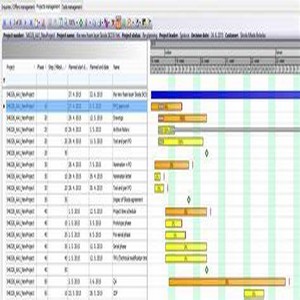Method Statement for Precast Driven Pile
Method Statement for Precast Driven Pile
Method Statement for Precast Driven Pile
Introduction
In the realm of construction, precast driven piles have emerged as a reliable and efficient foundation solution. In this blog post, we will explore the significance of precast driven piles, their advantages, and the construction process involved. Join us as we delve into the world of precast driven piles and their contribution to sturdy and sustainable structures.
Understanding Precast Driven Piles
Precast driven piles are premanufactured concrete or steel elements that are used as deep foundation supports. They are installed by driving them into the ground using specialized machinery, providing excellent load-bearing capacity for various structures. The piles come in a range of sizes and shapes, allowing customization to meet specific project requirements.
Advantages of Precast Driven Piles
The use of precast driven piles offers several advantages over other foundation solutions. First and foremost is their exceptional load-bearing capacity. Precast driven piles are designed to withstand substantial vertical and horizontal loads, making them suitable for a wide range of construction projects, including buildings, bridges, and industrial structures.
Another significant advantage is their quick and efficient installation process. Precast driven piles can be installed rapidly, as there is no need for curing time. This reduces project timelines and minimizes disruption to the construction site. Additionally, precast driven piles can be driven into a variety of soil conditions, including cohesive and non-cohesive soils, allowing for versatile application.
The premanufactured nature of precast driven piles ensures consistent quality control and durability. They are manufactured in controlled environments, adhering to strict production standards. This guarantees reliable and uniform performance, reducing the risk of foundation failure and subsequent costly repairs.
Construction Process
The installation of precast driven piles involves several steps. First, a thorough analysis of soil conditions and engineering calculations are performed to determine the appropriate pile type, length, and spacing for the project. Precast driven piles are then fabricated off-site, ensuring precise manufacturing and quality control.
During installation, a pile-driving rig is used to drive the precast piles into the ground. The rig delivers impact energy to the pile, driving it deeper until the desired bearing capacity is achieved. The driven piles are carefully aligned and driven to the required depth, considering factors such as soil conditions and load requirements.
After installation, the piles are tested for integrity and load-bearing capacity. Various non-destructive testing methods, such as sonic and integrity tests, are employed to ensure the piles meet the required standards. The piles are then cut or trimmed to the desired elevation level.
Conclusion
Precast driven piles offer a robust and efficient foundation solution in construction projects. Their outstanding load-bearing capacity, quick installation process, and consistent quality make them a preferred choice for many engineers and contractors. By leveraging the strength and efficiency of precast driven piles, structures can be built on solid foundations, ensuring long-lasting stability and durability.
Construction Literacy
WE REPRESENT THE FUTURE OF THE CONSTRUCTION







